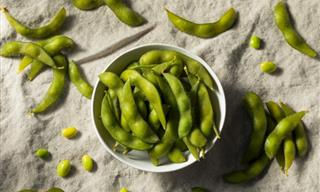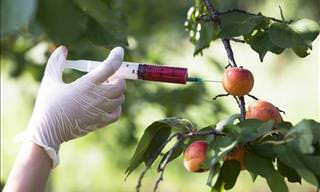But before we dive deep into the meat of the debate, it is crucial we understand what GMOs even are. There are several different definitions for what constitutes a genetically modified organism, but the narrow definition used by the World Health Organization is the most helpful one. According to the WHO, a GMO is an organism that has been modified in such a way that cannot occur in nature through breeding and recombination (the process by which genetic traits are passed down produce offspring that diverge from both parents in a meaningful way).
For many people arguing against GMOs, the key is that this modification is unnatural, which certainly sounds scary. But then, much of human civilization can be argued to be unnatural, be it our use of language, the tools we use and the way we behave. Just because something is unnatural does not necessarily make it evil or wrong, and conversely, just because something is natural does not make it desirable. But the argument doesn’t stop there.
If we were to use the broader definition, well, humans have been genetically modifying organisms for thousands of years through selective breeding, hybridization and more. Using this definition, all of our crops, pets, and livestock are genetically modified. Think of the way we’ve selectively bred wolves and turned them into this:
Or how we’ve cultivated bananas to be larger, sweeter and seedless:
Now, these cases of human interference may appear innocuous to you, but look more closely and they become a little bit more sinister when you consider small details like the many genetic diseases that plague purebred dogs, the sterility of mules and how most of our livestock couldn’t even survive in nature anymore. So how is genetic modification any different?
Genetic modification refers to the isolation of desirable genetic traits from one species and adding those specific genes to an entirely different species. This could be done to increase crop yield as well as resistance to natural hazards such as pests and weather conditions.
This could be a cause for concern in such cases when an allergen is introduced to a species which does not naturally contain it. However, all documented cases of allergy-inducing GMOs occurred during testing, and none of these GMOs made it to market. In fact, allergies are one of the major issues that GMOs may be able to address in the future, by removing the particular genes which trigger the allergic reaction altogether.

A more serious concern some people have is that the modification is unstable and that the genes introduced into the GMO can transfer to other organisms. For example, wheat crops that were modified to be resistant to weed killers will transfer to neighboring weeds, or that antibiotic resistance will transfer to harmful bacteria, creating superbugs. Testing failed to prove such gene transfer existed, but GMO companies have developed fail-safes, such as making GMOs sterile in the second generation so as to inhibit their growth or potential to inadvertently cross-breed with non-GMO equivalents.
Meanwhile, while the current scientific consensus holds that GMOs are as safe as organic alternatives, those against GMOs claim that the science is still inconclusive and that not enough stringent testing has been done to absolutely assure that GMOs are safe for consumption and for the environment.
While some people are bound to be skeptics and contrarians, some of the concerns regarding GMOs are very real and could be assuaged by a more transparent and down-to-earth discussion by the scientific community about the potential risks, long-term effects and the scientific certainty about GMOs.
 Go to BabaMail
Go to BabaMail



























